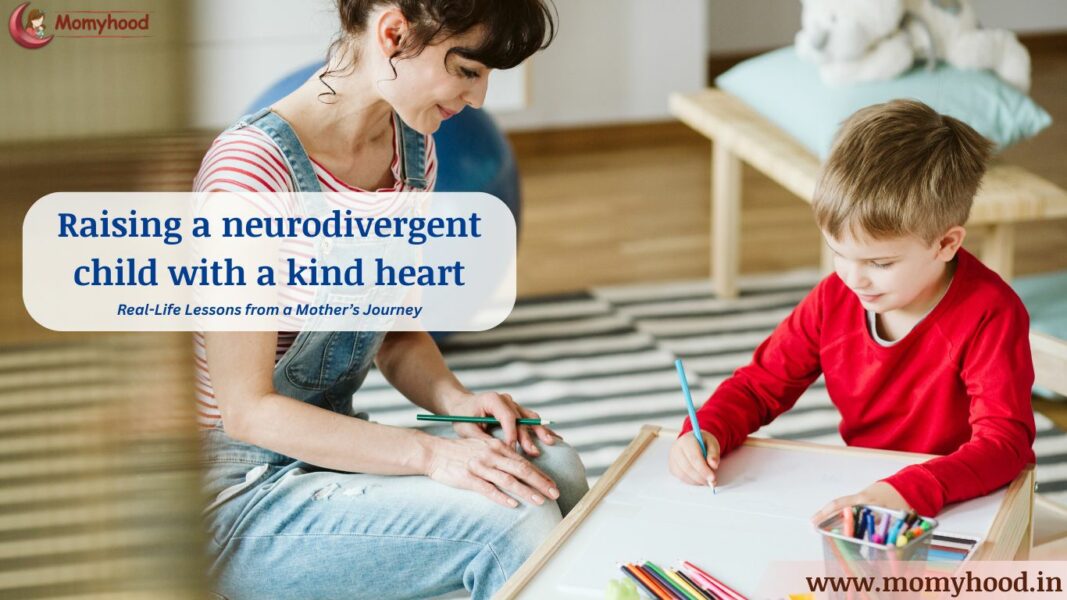— A real story by a special needs mom
This blog was first shared on 6th November 2024 by a mom just like you. We updated it on 13th July 2025 to add some fresh thoughts and make it even more comforting for those who need it today.
Some children are born with softness in their hearts.
They offer without expecting.
They invite without hesitation.
They forgive without question.
And when your child also has ADHD — that kindness makes teaching boundaries to ADHD kids even more delicate.
As a parent, I’ve seen my son struggle with boundaries.
He can’t always understand why others don’t reciprocate.
If someone refuses to play, he still tries again.
If someone is rude, he laughs it off — but I can see it affects him.
He doesn’t get why someone wouldn’t want to be friends with him.
And every time I try to explain, it feels like I’m asking him to stop being himself.
But I’ve learned — slowly, painfully, and with a lot of effort —
I don’t need to change his kindness. I need to help him carry it safely.
📣 Loved what you read? Want to go deeper into conscious parenting? ✨ The Power of Manifestation in Parenting is now available — A soulful guide packed with real-life tools like affirmations, energy shifts, and sleep talk that I personally use with my son, Hitarth. 💛 Start your journey toward calmer, connected parenting today. 🎉 Launch Offer: Only ₹99 (limited-time price!) 📲 Instant download. No waiting. 👉 Grab your copy now!.
How I Found My Way
Like most moms, I started by blaming myself.
Was I too soft?
Did I not discipline enough?
Why does he not “get it” when others do?
But instead of staying stuck in guilt, I decided to take small, steady steps toward understanding.
Teaching boundaries to ADHD kids isn’t about control — it’s about giving them the tools to protect their emotional space. Here’s what helped me — and what I learned from each:
Watching Videos by Child Psychologists
I began with short videos by experts like Dr. Mona Delahooke and Dr. Becky Kennedy (a.k.a. Dr. Becky at Good Inside).
From them, I learned:
- That behavior is communication. If my child is struggling to “read” situations, it’s not disobedience — it’s a sign of emotional overload or developmental delay.
- That emotional regulation comes before social correction. First, calm the storm inside. Then talk about what happened.
- That I need to be the safe space, not the “fixer.” When my child feels understood, he’s more open to learning.
Books That Changed My Parenting Lens
I read:
“The Explosive Child” by Dr. Ross Greene
This book taught me that:
Kids do well if they can.
It’s not about motivation — it’s about lagging skills.
My son wasn’t choosing to ignore social rules — he didn’t yet have the tools.
“What Your ADHD Child Wishes You Knew” by Dr. Sharon Saline
This book gave me five essential C’s:
✅ Connection
✅ Consistency
✅ Compassion
✅ Collaboration
✅ Celebration
I started using collaborative problem-solving — asking him what he thinks might help when he feels excluded or confused.
These books completely changed my approach to teaching boundaries to ADHD kids.
Following ADHD Coaches & Special Educators
I started following ADHD-positive parenting voices who didn’t treat it like a “problem,” but a different way of thinking.
From their blogs and reels, I learned:
- To use visual aids instead of verbal commands
- To focus on one goal at a time instead of trying to “fix” everything at once
- That ADHD isn’t just about attention — it affects emotional sensitivity, social processing, and even the way they feel love
And that changed the way I spoke to my son.
Related read: Recognizing & Managing The Impulsive Behaviour In A Hyperactive Child
Support Groups Gave Me Real-World Wisdom
I joined WhatsApp and Facebook groups where parents of neurodivergent kids shared their everyday challenges — and creative solutions.
Some of the most helpful things I learned were:
- “Boundary scripts” that are simple and clear for ADHD kids
- How other moms use reward jars for practicing social skills
- How to stop comparing my child to “typical” kids — and focus only on his growth
Most of all, I learned:
I’m not alone. And neither is my child.
Other moms shared what worked for them in teaching boundaries to ADHD kids — like roleplay, scripts, or reward jars.
“Kids with ADHD thrive when we guide their emotions through structure and compassion — not shame or fear.”
What Makes Teaching Boundaries to ADHD Kids So Complex?
Scientific studies and child psychology suggest that kids with ADHD may have:
-
Low impulse control: They act quickly before thinking.
-
Delayed executive functioning: They struggle with judgment, social prediction, and reflection.
-
Emotional hyper-reactivity: They feel emotions more intensely and take longer to self-regulate.
-
Difficulty in reading social feedback: They often miss cues like body language, tone changes, or sarcasm.
So when the world isn’t kind in return, they feel confused, not necessarily hurt — and that confusion, if not addressed, turns into withdrawal or self-doubt over time.
Understanding emotional reactivity is key to teaching boundaries to ADHD kids without shame.
Also read: Helping Your Child with ADHD Manage Screen Time
What Helped Us (Practical Tools That Worked)
1. “Friendship Circles” (Visual Cue Tool)
We drew a big circle and put names of close friends inside.
Outside the circle, we added people who are just “playground nice.”
This helped my son understand: not everyone is “inner circle,” and that’s okay.
“Friendship Circles” became our favorite tool for teaching boundaries to ADHD kids visually.
2. Roleplay with Puppets
Instead of saying, “Don’t let people use you,”
I used soft toys to act out scenes:
One puppet invites, the other says no. Then we ask:
“How does Bunny feel? What can Bunny do now?”
ADHD brains learn better through play, repetition, and emotion.
3. Emotion Naming Cards
We use printable emotion flashcards with faces and words.
When something upsets him, I say:
“Point to how you feel.”
Naming feelings helps regulate the brain’s amygdala and brings the child back to the thinking zone.
4. The “One More Chance” Rule
We use counters or small pebbles. He gets to give one more chance when someone is unkind — but learns to stop after that.
This builds a habit of healthy emotional boundaries.
5. Visual Schedules for Self-Worth
We use charts where he marks:
-
Did I show kindness?
-
Did I protect my feelings?
-
Did I say no when needed?
Tracking behavior with visual feedback increases confidence and awareness over time.
Manifestation & Mindset — For Him and Me
I also brought in something that changed me —
Manifestation and emotional energy work.
When the day ends and emotions have flown everywhere, we sit in silence… and then I gently guide him (and myself) back to belief:
Sleep Talk
Every night I whisper into his ears:
“You are safe.”
“You are kind and wise.”
“The right people love you for who you are.”
The subconscious listens best in sleep — and these words root self-worth.
Mirror Affirmations
Every morning, we stand in front of the mirror and say:
“I am kind. I can say no. I protect my happy heart.”
He smiles, sometimes laughs — but these phrases stick.
My Own Daily Mantra:
“He is not broken. He is beautifully wired. I am not alone.”
Even when teaching boundaries to ADHD kids feels overwhelming, I remind myself: softness isn’t weakness.
Final Words to Every Mom Like Me
If your child has ADHD and a heart that loves easily —
You are walking the world’s most sensitive tightrope.
You want to protect their light…
but the world doesn’t always see its glow.
So we become their guides — not by toughening them up,
but by building tools, routines, and belief systems that allow them to stay soft without being hurt.
“My child’s soul came into this world to teach love.
My job is to help him carry that love — without losing himself in the process.”
If you’re struggling with teaching boundaries to ADHD kids, know this: their softness isn’t the problem. The world’s misunderstanding is.
This story was shared anonymously by a fellow mom who is raising a beautifully sensitive, differently-wired child. Her hope is that her journey helps other parents feel seen, supported, and never alone. If you’ve been through something similar, or have tools to share, email us at Momyhood.
Or if you’ve found a tool that helped in teaching boundaries to ADHD kids, email us at momyhood@gmail.com or DM us on Instagram at Momyhood— we’d love to share your wisdom.
Your comments and shares do more than just support our blog—they uplift the amazing moms who share their stories here. Please scroll down to the end of the page to leave your thoughts, and use the buttons just below this line to share. Your support makes a big difference!



